Java 最初由 Sun Microsystems 于 1995 年发布。Java 的开发始于 20 世纪 90 年代初,由 James Gosling 和他的团队领导。该语言最初被称为“Oak”,但后来因一种咖啡而更名为“Java”。
Java 的创建是为了满足对独立于平台的编程语言的需求,该语言可用于创建可以在任何设备上运行的软件,而不管底层硬件或操作系统如何。主要目标是让开发人员“编写一次,随处运行”,这意味着用 Java 编写的代码可以在任何支持 Java 虚拟机 (JVM) 的平台上运行。
Java 的设计注重简单性、可移植性和安全性,使其适用于从 Web 开发到企业软件的广泛应用程序。由于其多功能性以及跨不同平台构建强大、高性能应用程序的能力,它很快就受到了欢迎。
作为当今软件开发中使用最广泛的语言之一,并且对它进行了很长时间的研究,我在这里收集了一些关于 Java 奇妙世界的问题和答案。
被很多人讨厌,却被很多人喜爱。
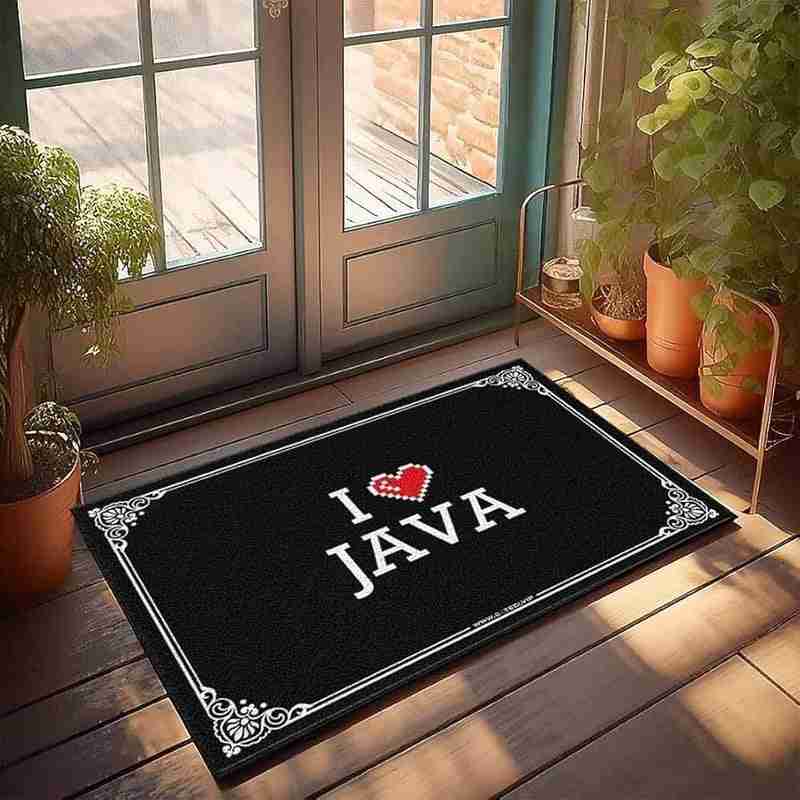
问题
1。 JDK 和 JRE 有什么区别?
JDK(Java 开发工具包)供开发人员用于创建 Java 应用程序,包括必要的工具、库和编译器。 JRE(Java Runtime Environment)供最终用户运行Java应用程序,提供运行时环境和必要的类库,但不包括开发工具。
2。使用Java有什么好处?
使用 Java 的好处如下:
可移植性:Java 代码可以在任何具有 Java 虚拟机 (JVM) 的平台上运行。
安全性:Java 具有内置的安全模型,有助于保护用户免受恶意代码的侵害。
面向对象:Java 是一种面向对象的编程语言,可以轻松创建模块化和可重用的代码。
健壮:Java 是一种健壮的语言,旨在可靠且高效。
广泛使用:Java 是一种广泛使用的语言,拥有庞大的开发人员社区和支持资源。
3。 Java 平台有哪些不同的组件?
Java 平台是一个软件环境,为开发和运行 Java 应用程序提供了标准方法。它由以下组件组成:
Java 虚拟机 (JVM)。
Java 运行时环境 (JRE)。
Java 开发套件 (JDK)。
4。 Java 数据类型有哪些不同类型?
Java中有两种数据类型:原始数据类型和非原始数据类型。
原始数据类型
非原始数据类型
5。 Java 控制语句有哪些不同类型?
Java中的控制语句分为三种类型:
6。 Java 类和 Java 接口有哪些不同类型?
Java 类主要有两种类型:
普通类是Java中最常见的类类型。它们可以有字段、方法和构造函数。
抽象类是无法实例化的类。它们只能用作其他类的基类。
Java 接口也有两种主要类型:
普通接口是抽象方法的集合。类可以实现接口,从而继承接口的抽象方法。
Maker 接口 是不包含任何方法的接口。它们用于指示类具有某种属性或行为。
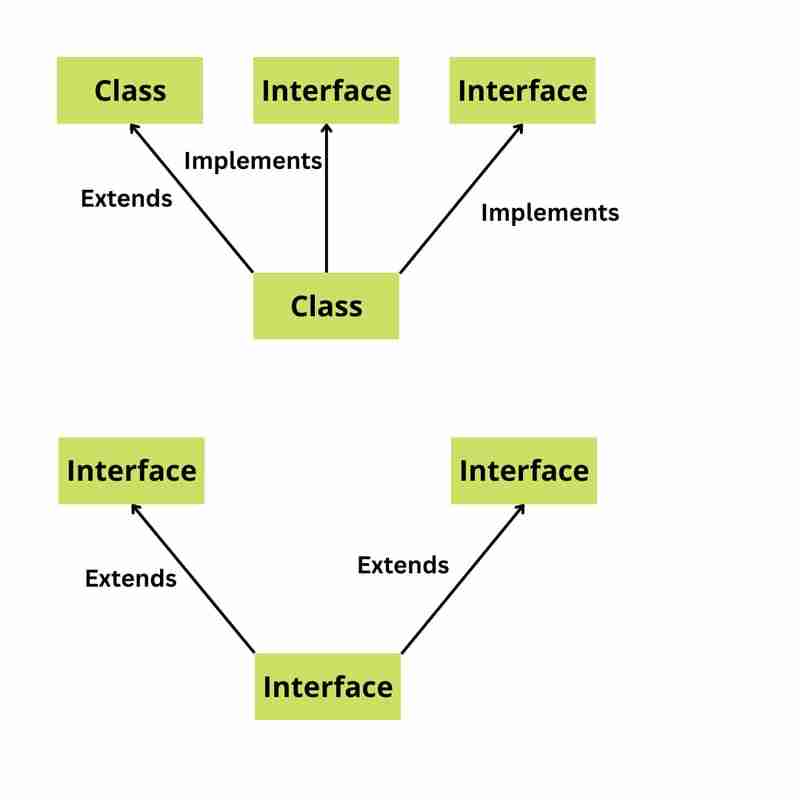
7。 Java 库和 Java 框架有哪些不同类型?
Java 库是可重用的 Java 类和接口的集合。
** Java 库的一些示例:**
Apache Commons Google Guava Joda-Time JUnit Mockito
Java 框架是可重用的 Java 类、接口和提供特定功能的代码的集合。
Java 库的一些示例:
8。 Java 工具有哪些不同类型?
Java中有两种类型的线程:用户线程和守护线程。
用户线程 是由用户或应用程序创建的线程。它们是高优先级线程,JVM 将等待任何用户线程完成其任务,然后再终止它。
守护线程是为用户线程提供服务而创建的线程。它们是低优先级线程,仅在用户线程运行时才需要。一旦所有用户线程完成执行,即使还有守护线程仍在运行,JVM 也会终止。
9。 Java 网络有哪些不同类型?
Java 网络有两种主要类型:
客户端-服务器网络 是一种网络类型,其中有客户端应用程序向服务器应用程序请求服务。然后,服务器应用程序向客户端应用程序提供服务。
对等网络是一种网络类型,其中两个或多个应用程序无需服务器即可直接相互通信。
10。过程式编程和面向对象编程有什么区别?
过程式编程是一种自上而下的编程方法,其中程序分为一系列函数,每个函数执行特定的任务。
另一方面,OOP 是一种自下而上的编程方法,其中程序被划分为对象,每个对象代表一个现实世界的实体。
11。 OOP的核心概念是什么?
OOP 的核心概念是:
抽象:抽象是向用户隐藏对象实现细节的过程。这允许用户。这使得用户可以专注于对象的功能,而不必担心它是如何工作的。
12。重载和覆盖有什么区别?
重载是指能够拥有多个同名但参数不同的方法。
重写是指子类中的方法与超类中的方法具有相同签名的能力。
13。静态绑定和动态绑定有什么区别?
静态绑定和动态绑定是面向对象编程(OOP)中解决函数调用的两种不同方式。
-静态绑定:当编译器在编译时确定要调用的方法时发生。这是 OOP 中最常见的绑定类型,用于静态方法和非虚拟方法。
-动态绑定:在运行时才确定要调用的方法时发生。这用于虚拟方法,允许多态性。
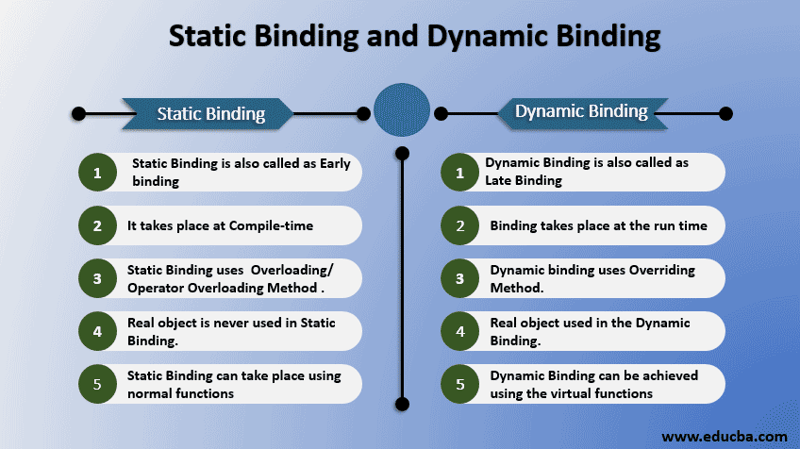
14。为什么Java不支持多重继承?
Java 不支持多重继承,因为它可能导致许多问题,包括:
15。 Java中什么时候使用接口和抽象类?
抽象类和接口都用于在面向对象编程中实现抽象。
抽象类与普通类类似,不同之处在于它们可以包含抽象方法,即没有主体的方法。抽象类无法实例化。
Interfaces are a kind of code contract, which must be implemented by a concrete class. Interfaces cannot have state, whereas the abstract class can have state whith instance variables.
16. What are the challenges of using OOP in Java?
There are some challenges associated with using OOP in Java.
These challenges include:
Complexity: OOP can make code more complex, especially when dealing with large and complex systems.
17. What is the difference between an array and a linked list?
In general, arrays are good choice for data structures where the data is accessed frequently and the order of the data is important.
Linked lists are a good choice for data structures where the data is inserted or deleted frequently and the order of the data is not important.
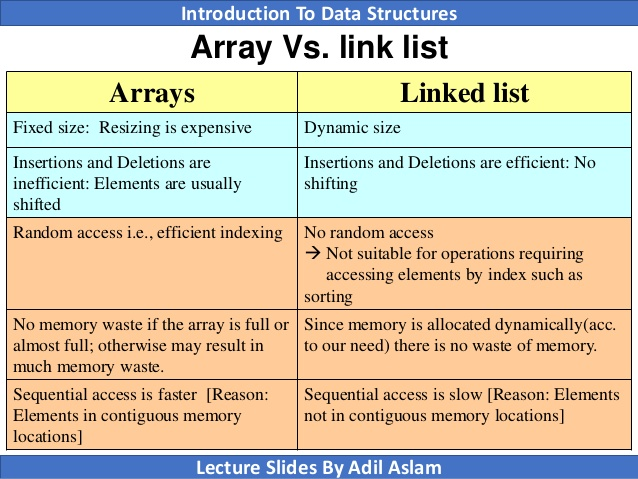
18. Explain the concept of a hash table.
A hash table is a data structure that maps keys to values. It is a very efficient data structure for storing and retrieving data, as it can access data in constant time.
put(key, value): This method stores the key-value pair in the hash table.
get(key): This method returns the value associated with the key.
remove(key): This method removes the key-value pair from the hash table.
19. What is the time complexity of various operations in a binary search tree (BST)?
The time complexity of various operations in a binary search tree (BST) depends on the height of the tree. The height of a BST is the number of nodes on the longest path from the root node to a leaf node.
The following table shows the time complexity of various operations in a BST:
Operation---------------Time complexity
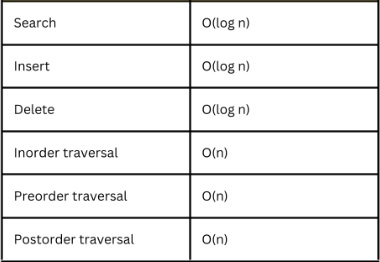
20. Describe the difference between breadth-first search (BFS) and depth-first search (DFS) algorithms.
Here is a table that summarizes the key differences between BFS and DFS:
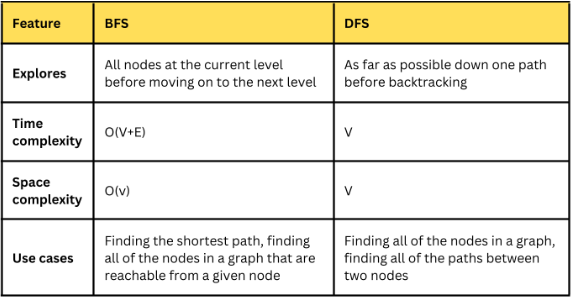
21. Explain the concept of a priority queue and provide an example of its application.
A priority queue is a data structure that stores elements along with their associated priorities. It allows efficient retrieval of the element with the highest (or lowest) priority. The priority determines the order in which elements are processed or accessed.
22. Explain the concept of dynamic programming and provide an example problem where it can be applied.
Dynamic programming is a problem-solving technique that involves breaking down complex problems into smaller, overlapping subproblems and solving them in a bottom-up manner.
23. How does a HashSet work internally in Java?
A HashSet internally uses a HashMap to store its elements. When you add an element to a HashSet, it is first hashed using the hashCode() method.
The hash code is then used to find the corresponding bucket in the HashMap. If the bucket is not empty, the element is compared to the other elements in the bucket using the equals() method. If the element is equal to any of the other elements in the bucket, it is not added to the HashSet.
24. What is the time complexity of various operations in a hash table?
The time complexity of various operations in a hash table depends on the hash function used and the number of elements in the hash table. In general, the time complexity of the following operations is:
25. What is multithreading, and why is it important in Java?
Multithreading is a programming concept that allows multiple tasks to be executed concurrently. In Java, multithreading is implemented using the thread class. A thread object represents a single thread of execution.
多线程在 Java 中如此重要的原因有很多。
一些最重要的原因包括:
26。如何在 Java 中创建线程?
Java 中有两种创建线程的方法:
27。进程和线程有什么区别?
进程是正在执行的程序。它有自己的内存空间、自己的堆栈和自己的一组资源。
线程是一个轻量级的进程,它与同一进程中的其他线程共享相同的内存空间和资源。
进程和线程之间的一些关键区别:
- 进程彼此独立。
- 进程比线程重。
- 进程比线程更难创建和管理。
28。 Java 中的同步是如何工作的?解释同步方法和同步块的概念。
Java中的同步是一种允许多个线程安全访问共享资源的机制。当线程在资源上同步时,它是唯一可以访问该资源的线程。
这可以防止竞争条件,即两个或多个线程尝试同时访问同一资源的情况。
Java 中有两种同步方式:
同步方法:
同步方法是一种一次只能由一个线程执行的方法。要将方法声明为同步,需要使用synchronized关键字。
同步块
同步块是一次只能由一个线程执行的代码块。要将代码块声明为同步,您需要使用synchronized关键字并指定该代码块同步的对象。
29。什么是死锁,如何避免死锁?
死锁是两个或多个线程相互等待完成的情况。当两个线程都尝试获取同一资源上的锁时,就会发生这种情况。
为了避免死锁,我们可以这样做:
30。 Java 中 volatile 关键字的用途是什么?
volatile 关键字用于确保所有线程看到变量的相同值,即使该值被另一个线程更改。
31。解释线程调度上下文中抢占式调度和时间切片之间的区别。
抢占式调度是指操作系统可以强行从CPU中移除一个线程并将其交给另一个线程。时间分片是指为每个线程分配一定的时间在 CPU 上运行。
主要区别在于,在抢占式调度中,操作系统可以随时中断线程,而在时间切片中,线程只有在用完分配的时间时才会被中断。
32。 Java 中的异常是什么,为什么异常处理很重要?
在Java中,异常是在程序执行过程中发生的破坏正常指令流的事件。它是一个在运行时抛出的对象。
以下是异常处理的一些好处:
33。 Java是如何处理异常的。
Java 通过使用一种称为异常传播的机制来处理异常。当抛出异常时,它会在调用堆栈中向上传播,直到被捕获。如果没有捕获异常,程序就会崩溃。
34。描述 try-catch-finally 块及其在异常处理中的用途。
try-catch-finally 块是一种 Java 语法,可让您优雅地处理异常。它由三部分组成:
以下是使用 try-catch-finally 块的一些好处:
35。 Java 中的 throw 和 throws 关键字有什么区别?
Java 中的 throw 和 throws 关键字用于处理异常。
36。如何在 Java 中创建自定义异常?
要在 Java 中创建自定义异常,您需要创建一个扩展 Exception 类的类。自定义异常类可以有自己的构造函数、方法和字段。
参考文献: https://medium.com/@spinjosovsky/practical-comparison- Between-depth-first-search-dfs-vs-breadth-first-serch-bfs-bf360240cf72
https://docs.oracle.com/en/java/
https://www.algotutor.io/campus-program
以上是Java基础问题的详细内容。更多信息请关注PHP中文网其他相关文章!




